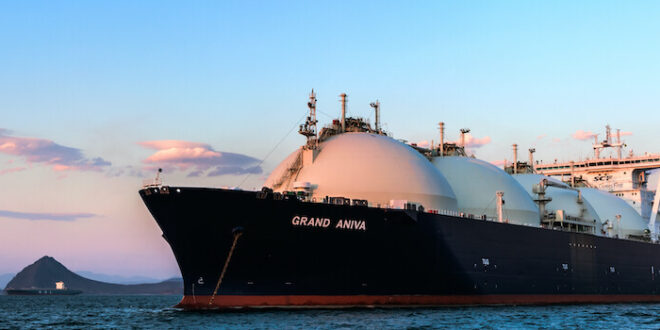Global demand for liquefied natural gas (LNG) is estimated to rise by more than 50% by 2040, as China and countries in South and Southeast Asia use LNG to support their economic growth, Shell said on Wednesday.
The market remains “structurally tight”, with prices and price volatility remaining above historic averages, constraining growth, the world’s largest LNG trader said in its 2024 annual LNG market outlook.
Demand for natural gas has peaked in some regions, including Europe, Japan and Australia in the 2010s, but continues to rise globally, and is expected to reach around 625-685 million metric tons per year in 2040, Shell said. That is slightly lower than Shell’s 2023 estimates of a global demand increase to 700 million tons by 2040.
“While things are relatively balanced and seemed relatively comfortable today, the market is still quite fragile,” Steve Hill, executive vice president for Shell Energy, told analysts on a call following the outlook report.
“We have a structurally tight market that’s been balanced by near-term market weakness for where we see fragility and volatility continuing,” Hill said.
Shell LNG outlook Shell LNG outlook
China Dominance
Shell said that global demand for LNG is estimated to rise by more than 50% by 2040, as China and countries in South and Southeast Asia use LNG to support their economic growth.
China, which in 2023 overtook Japan as the world’s top LNG importer, is likely to dominate LNG demand growth this decade as its industry seeks to cut carbon emissions by switching from coal to gas, the report said.
“China is the market that we are most bullish about this decade. And one of the reasons for that is the massive amount of new gas infrastructure that is coming on stream at the moment,” Hill told analysts.
China’s 2024 LNG imports are expected to rebound to nearly 80 million tons, from about 70 million tons in 2023, according to ICIS and Rystad forecasts, surpassing 2021’s record 78.79 million tons.
China-LNG-Outlook China-LNG-Outlook
From 2030 to 2040, declining domestic gas production in parts of South Asia and Southeast Asia could drive a surge in demand for LNG as these economies need fuel for gas-fired power plants or industry.
Shell’s report predicted a balance between rising demand and new supply for those regions, but said significant investments would be needed in gas import infrastructure.
“In the medium term, latent demand for LNG – especially in Asia – is set to consume new supply that is expected to come on to the market in the second half of the 2020s,” the report said.
GLobal LNG supply and demand – Shell GLobal LNG supply and demand – Shell
As supplies were ample last year as the world market started to recover from the major disruption linked to the onset of the Ukraine war in 2022, prices have eased.
Asian spot prices averaged around $18 per million British thermal units (mmBtu) in 2023, easing from an all-time high of $70/mmBtu in 2022.
Prices fell further this year and remain below $10/mmBtu, encouraging buyers from China to Bangladesh to lock in new term supplies from Qatar and the United States.
Hill said that long-term LNG contracts which Europe has signed so far will not fill a demand-supply gap for the rest of this decade, adding that there was a structural shortage of 50 million to 70 million metric tons a year for the rest of the decade or more that Europe needs to secure.
In the U.S. market, he said that an extended ban on new LNG export projects would have “quite an impact” on the fast-growing global market.
The ban “is probably okay if it lasts a year or so, but if it was a long-term ban, then it would have quite an impact on the market,” Hill told analysts.

 Iran Energy News Oil, Gas, Petrochemical and Energy Field Specialized Channel
Iran Energy News Oil, Gas, Petrochemical and Energy Field Specialized Channel



